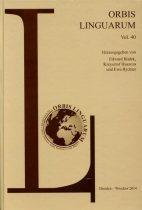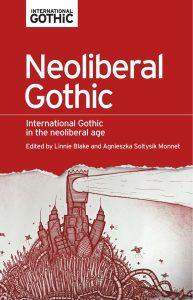2014
 This article argues that the negative portrayal of medical professionals in contemporary Thai horror is to a certain extent reminiscent of the tensions between the official and popular attitudes to Western bio-medicine and Traditional Thai Medicine (TTM) in Thai society. The article argues that medical doctors, together with other members of the professional community, such as for instance architects, or journalists, represent a relatively high level in the Thai social hierarchy which can be openly criticized without much fear that the films will be cut by censors. Last but not least, the article will look in more detail on Paween Purijitpanya’s debut feature The Body #19 (2006). Set within the less-than-glamorous world of medical professionals, the film toys with the concept of the mental disease (schizophrenia), which in traditional Thai folk medicine has consequently been attributed to spiritual possession. This dual spiritual/medical nature of the mental disease in Thai popular perception, has allowed the filmmakers to create a film that can be seen as simultaneously repeating and breaking the established Thai horror formulas. At the same time, while directing our attention to the notion of disease, the film offers an interesting, though subtle representation of the disintegration of the traditional hierarchical Thai society and its values.
This article argues that the negative portrayal of medical professionals in contemporary Thai horror is to a certain extent reminiscent of the tensions between the official and popular attitudes to Western bio-medicine and Traditional Thai Medicine (TTM) in Thai society. The article argues that medical doctors, together with other members of the professional community, such as for instance architects, or journalists, represent a relatively high level in the Thai social hierarchy which can be openly criticized without much fear that the films will be cut by censors. Last but not least, the article will look in more detail on Paween Purijitpanya’s debut feature The Body #19 (2006). Set within the less-than-glamorous world of medical professionals, the film toys with the concept of the mental disease (schizophrenia), which in traditional Thai folk medicine has consequently been attributed to spiritual possession. This dual spiritual/medical nature of the mental disease in Thai popular perception, has allowed the filmmakers to create a film that can be seen as simultaneously repeating and breaking the established Thai horror formulas. At the same time, while directing our attention to the notion of disease, the film offers an interesting, though subtle representation of the disintegration of the traditional hierarchical Thai society and its values.



 The article analyses the representation of organ harvesting and trade/trafficking in eight post-2000 Asian films. It discusses the films’ consistent portrayal of transplantation as dependant on criminal networks and activities, and their critique of neoliberal medicine as responsible for deepening the economic divisions within Asian societies. The article argues that regional organ trade operates in accordance with the same principles as the global one, allowing for an identification of donor and recipient zones specific to Asia and directing the local organ flows towards the economically privileged Asian countries, such as Japan, Taiwan or South Korea, three countries identified as major beneficiaries in the films. Last but not least, the essay offers a reading of the potentially gothic figures of vengeance appearing in the films (ghosts, resurrected neo-humans, victims-turned-abusers) in terms of a narrative strategy of resistance devised to empower the oppressed.
The article analyses the representation of organ harvesting and trade/trafficking in eight post-2000 Asian films. It discusses the films’ consistent portrayal of transplantation as dependant on criminal networks and activities, and their critique of neoliberal medicine as responsible for deepening the economic divisions within Asian societies. The article argues that regional organ trade operates in accordance with the same principles as the global one, allowing for an identification of donor and recipient zones specific to Asia and directing the local organ flows towards the economically privileged Asian countries, such as Japan, Taiwan or South Korea, three countries identified as major beneficiaries in the films. Last but not least, the essay offers a reading of the potentially gothic figures of vengeance appearing in the films (ghosts, resurrected neo-humans, victims-turned-abusers) in terms of a narrative strategy of resistance devised to empower the oppressed.